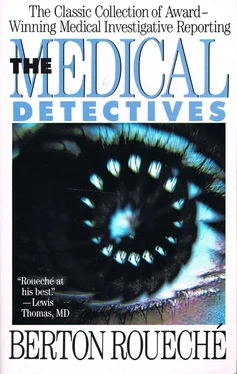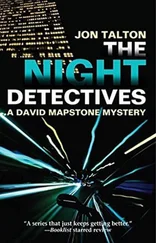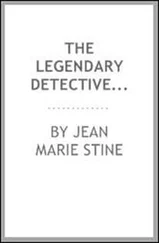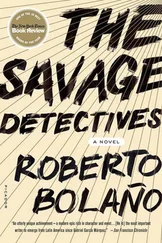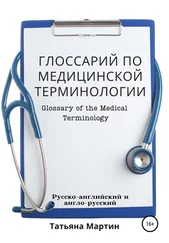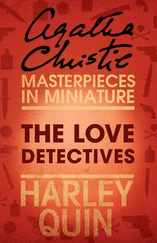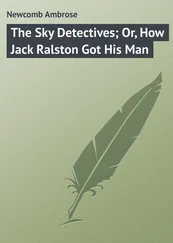Dr. Menzies's last assignment was one of a number of similar studies that have been undertaken in collaboration with the United States Public Health Service since the Bonner episode in 1953. The investigation, which was understandably intensified by the harrowing discovery at Carlsbad Caverns two years later, is expected to continue for at least another year. Some months will then be required to accurately assess its results. The preliminary findings, however, have been tentatively correlated by Ernest S. Tierkel, chief of Rabies Control Activities at the service's Communicable Disease Center (now the Center for Disease Control) in Atlanta, and they are hardly reassuring. "During the last eighteen months or so, various field units have bagged in the neighborhood of ten thousand bats, in sixteen different states," Dr. Tierkel says. "About a hundred and fifty of them were positive for rabies. The group included four species of tree-living, or solitary, bats and eight species of cave-dwellers, or colonials. All, of course, insectivorous. Every state in which we've made a thorough study has yielded its quota of positives. The list, at the moment, is Alabama, California, Florida, Georgia, Louisiana, Michigan, Minnesota, Montana, New Mexico, New York, Ohio, Oklahoma, Pennsylvania, Texas, Utah, and Wisconsin. Those are the facts that we have to work with. What they mean—their epidemiological significance—is what we hope to find out.
"In the early phases of our investigation, one possible conjecture was that what we were turning up wasn't really rabies. We thought it might be a new virus disease of bats so closely related antigenically to the rabies virus that the two couldn't be differentiated by the usual laboratory tests. But a little more laboratory work disposed of that possibility. The disease is definitely rabies. Another basic question is whether the disease has always been present in the insectivorous bats of the United States and we have only just discovered it, or whether it represents a recent northward invasion into this country from the vampire-bat-rabies areas in Latin America. I'm inclined to suspect that the latter is the answer. We know, at any rate, that the Mexican free-tails of our Southwest migrate deep into the vampire country of Mexico. According to some authorities, the vampires and the free-tails even share the same winter caves. We hope that's all they share. If it turns out, as some preliminary findings have suggested, that our bats also share the vampires' resistance to rabies, we're up against an extremely difficult problem. Vampires—some of them, at least—are known to be capable of transmitting the disease for long periods of time without showing any signs of illness themselves. In other words, they're like Typhoid Mary. They're true carriers. If our bats have that capacity, if we find that they sometimes attack simply because they're frightened and not because they've been driven into a frenzy by the disease, and if we also find that the bat represents an important reservoir of rabies in the United States. . . Well, those are only possibilities, of course. We don't have the data yet to even hazard an answer. But what if they're shown to be facts? I think it would be a very good idea to tighten up our system of rabies controls."
[1956]
CHAPTER 5
CH 3CO 2C 6H 4CO 2H (Aspirin)
Around five o'clock on the afternoon of Wednesday, May 4, 1955, an office boy walked into the office of Dr. Harold Jacobziner, Assistant Commissioner for Maternal and Child Health of the New York City Health Department and chief of the department's newly established Poison Control Center, with a memorandum initialed by a clerk in the report room of the center. Dr. Jacobziner had his hat on his head and his briefcase in his hand, but the message turned him back to his desk. He sat down, glanced again at the paper, and paused for a moment of geographical calculation. Then he picked up the telephone and dialed the department's Bureau of Public Health Nursing. An official of his acquaintance answered the call, and after a brisk exchange of civilities Dr. Jacobziner got briskly down to business. He had a job for one of the nurses on the staff of the municipal health center that served the Corona section of Queens. The assignment was an investigatory visit to the home of a couple named (I'll say) Mr. and Mrs. Francis R. Poole. They lived on Alburtis Avenue, in Corona. According to a formal notification just received by the Poison Control Center, their son, a boy of three named Richard, had been admitted to Whitestone Memorial Hospital a few hours earlier. It was another case of acute acetylsalicylic-acid intoxication.
Acetylsalicylic acid is the universal comforter known in the Esperanto of the laboratory as CH,C0 2C 6H 4CO 2H and almost everywhere else as aspirin. The latter is a term of proprietary origin that has achieved an all but total nomenclatural ascendancy over science. This triumph, though unique in medical history, was in no way uniquely accomplished. In common with all such fabrications that have outgrown the stigma of trade, the widespread acceptance of the name is generally attributable to its distinctive sound, to its attractive brevity, and to many years of pertinacious advertising. Nevertheless, unlike much commercial coinage, "aspirin" is not altogether an etymological freak. Its lineage is acceptably legitimate. It derives, roughly but rationally, from Spiraea , a botanical genus whose more prominent members (bridal wreath, meadowsweet, hardhack) are natural sources of salicylic acid, the active principle in aspirin. As it happens, however, the vegetable secretion of the acid is far from confined to plants of the Spiraea group. It also occurs in many other shrubs (jasmine, madder, partridgeberry), and in many legumes (peas, beans, clover), grasses (wheat, rye, sugar cane), and trees (beech, birch, olive, poplar, willow). The Spiraea were merely among the first such plants to be identified by modern pharmacology.
That the bark, fruit, and leaves of these plants contain some revitalizing agent has long been common, if largely rustic, knowledge. Potions rich in salicylic acid are as old as herbal therapy, and almost as ubiquitous. Practically all races seem to have early grasped their usefulness. A draught whose ingredients included the juice of willow bark was esteemed by many North American Indian tribes as an antipyretic, or fever reducer. Another aboriginal people—the Hottentots of South Africa—made good use of an essentially similar decoction to ease the agony of rheumatism. The willow, among other salicylate plants, was also held in high regard throughout the early Mediterranean world. Hippocrates, in the fourth century before Christ, recognized its capacity for relieving both pain and fever. He also perspicaciously recommended topical applications of willow leaves, presumably as an antiseptic, in the post-partum care of maternity cases, and, less perspicaciously, the juice of poplar bark for various eye diseases. A generation later, Theophrastus, a pioneer botanist who succeeded Aristotle as head of the Lyceum at Athens, proclaimed the analgesic excellence of madder bark. He was, in addition, commendably inspired to urge the inclusion of madder in the manual of mild but effective diuretics. Theophrastus's success in thus broadening the therapeutic range of the salicylates was presently matched by other investigators. Around A.D. 75, Dioscorides, a Greek surgeon in Roman military service, rose from a series of experiments with the discovery that a paste composed of willow ash would safely remove such callosites as corns. In the course of this study, he had stumbled upon the further fact that his corn cure was almost as useful in combating the torments of gout. Pliny the Elder, the celebrated Roman encyclopedist, placed willow juice on the diuretic list. He then went on to propose an infusion of poplar bark as a specific for sciatica, and, amending, if not improving upon, Hippocrates, suggested poplar gum to druggists in search of a satisfactory eyewash. To these innovations, more imaginative minds rapidly added an unguent of willow bark as a cure for earache, one of willow leaves as a dressing for bloody wounds, and a willow poultice to dissipate fistulas and erysipelatous lesions. By the end of the second century, when Galen completed his valiant thirty-volume pharmacopoeia, all the remedial powers—great, small, illusory—of the salicylates had been noted and defined. Galen was the mightiest of the Greco-Roman empirical pharmacists. He was also the last pharmacist of any stature anywhere until almost modern times. With the foundering of Rome, the whole of rational herbal therapy was lost to most of the Western world in the mists of Christian mysticism for well over a thousand years. ("All diseases of Christians are to be ascribed to demons," St. Augustine announced in the fifth century.) But for a scattering of practical folk-physicians, too simple to comprehend the complexities of fashionable piety, it might well have been lost forever.
Читать дальше
